37.1% of adults in Mexico suffer from obesity, which has increased by almost 58% in the last two decades, leading tohealth problems such as cardiovascular disease, cancer, and diabetes.
These facts were shared during the 2025 International Conference on Obesity Research, in which researchers from Tec de Monterrey and specialists from other institutions shared innovative ideas on how to attack this health problem.
“Obesity is a complex condition that can’t be understood through simplistic views or prejudices. Addressing it requires recognizing that it’s a chronic and multifactorial phenomenon,” said Juan Pablo Murra, Rector of the Tec, when opening the conference.
“It demands integrated responses from science, technology, nutrition, the urban environment, education, psychology, public policies, and other fields,” the rector added.
The theme in this fourth edition of the conference was Obesity and Its Impact Across Different Life Stages: A Multidisciplinary Perspective.
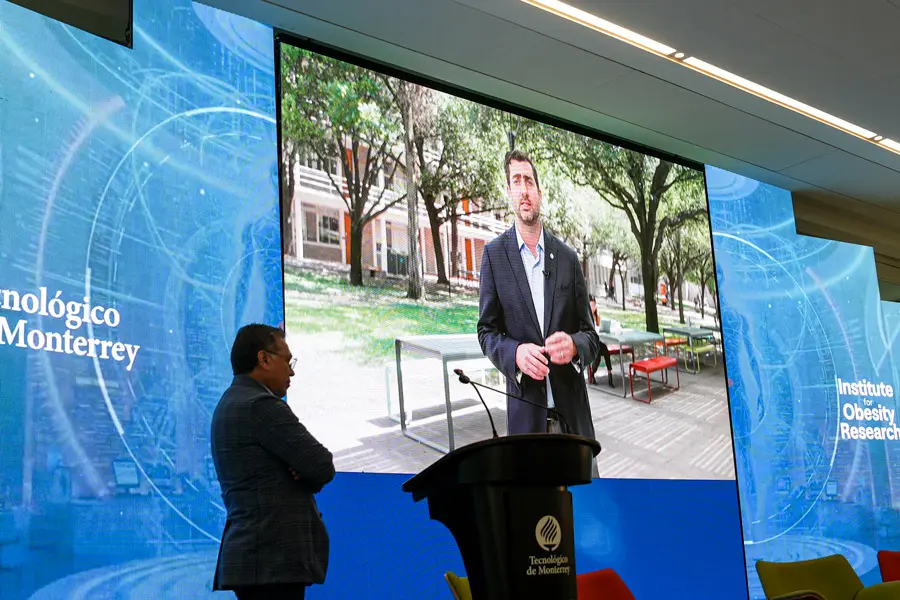
Tec de Monterrey is home to the Institute for Obesity Research (IOR), which seeks to generate knowledge with scientific rigor and provide analysis, ideas, and innovative solutions to the problem of obesity through inter- and transdisciplinary work.
Murra said that it is important to build interdisciplinary solutions with an ethical, human, and evidence-based perspective.
“This conference is an opportunity to bridge disciplines and transform knowledge into actions that move us toward real and sustainable solutions, reminding us that every advance can be the starting point for transforming realities,” he said
Fourth edition of the International Conference on Obesity Research
“Take a moment to reflect on that figure. 37.1% (41% women and 33% men) of the adult population suffers from obesity. If we don’t do something, it’s going to affect many more people,” said Feniosky Peña-Mora, Vice President of Research at the Tec.
“Obesity isn’t a challenge that can be understood from a single perspective. It’s a complex phenomenon that impacts various stages of life and multiple dimensions of the human experience,” he added.
Feniosky-Peña explained that the Institute for Obesity Research promotes projects that seek to improve people’s quality of life through five research units (experimental medicine, healthy foods, integrative biology, bioengineering, public policies).
“Obesity is a complex condition that can’t be understood through simplistic views or prejudices.” – Juan Pablo Murra, Rector of Tec de Monterrey
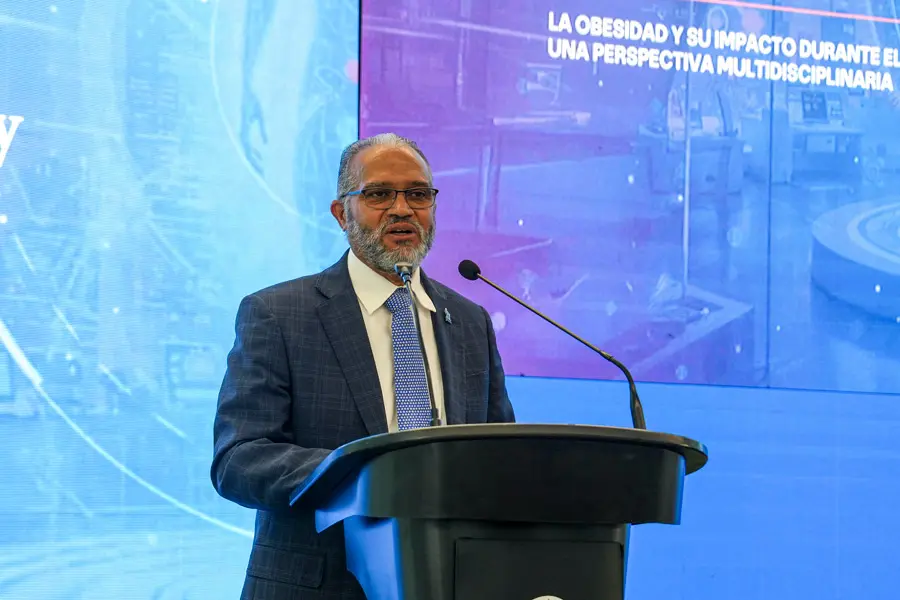
Clinical obesity: beyond the Body Mass Index
Leonardo Mancilla, Clinical Director of the Institute for Obesity Research, provided his perspective on the Body Mass Index (BMI) as a diagnostic factor.
The Body Mass Index (BMI) is a metric that compares a person’s weight and height to assess whether he or she is at a healthy weight. It is calculated by dividing a person’s weight (in kilograms) by his or her height squared (in meters).
“Traditionally, there’s never been agreement that Body Mass Index is the definitive measure of obesity.
“I can have two individuals with the exact same body mass index, yet their metabolic, clinical, and psychological profiles, complications, and quality of life can be completely different,” the physician said.
He presented four reasons why the definition of obesity cannot be based solely on the Body Mass Index.
-Individual variability
Two people can have the exact same BMI but have very different metabolic, clinical, and psychological profiles.
This implies that BMI fails to capture the complexity of obesity, which manifests itself differently in each individual.
-Limitations in risk assessment
BMI is useful for epidemiological studies, where the impact on large populations is analyzed.
However, in an individual clinical setting, doctors need to consider other factors such as fat distribution, comorbidities, and the patient’s quality of life, which BMI does not adequately capture.
-Abdominal obesity
Many experts suggest that abdominal obesity, measured by waist circumference, could be a more useful and clinically relevant indicator, as it is better related to metabolic and cardiovascular complications.
-Phenotypes with varying responses
There are different obesity phenotypes, and some individuals may develop complications quickly, while others may not develop significant problems for a long time.
A phenotype is the set of observable or expressed characteristics of an organism, such as its physical appearance, behavior, and biological functions.
This variation means that BMI, as a single tool, is insufficient to assess a patient’s health status.
He also presented some differences between preclinical obesity and clinical obesity in order to identify patients with different health statuses, risks of disease progression, prognosis, and care needs.

Clinical obesity:
- A systemic chronic disease characterized by alterations in the function of tissues, organs, or the individual due to excessive or abnormal adiposity.
- Exhibits signs and symptoms indicative of organ dysfunction.
- May lead to significant limitations in daily activities.
- Requires immediate medical treatment.
.
Preclinical obesity:
- A state of excessive or abnormal adiposity with preserved function of other tissues and organs.
- With no clinical manifestations of organ dysfunction.
- Variable risk of developing clinical obesity.
- Requires monitoring and preventive counseling.
“Traditionally, there’s never been agreement that Body Mass Index is the definitive measure of obesity.” – Leonardo Mancilla, Clinical Director of the Institute for Obesity Research
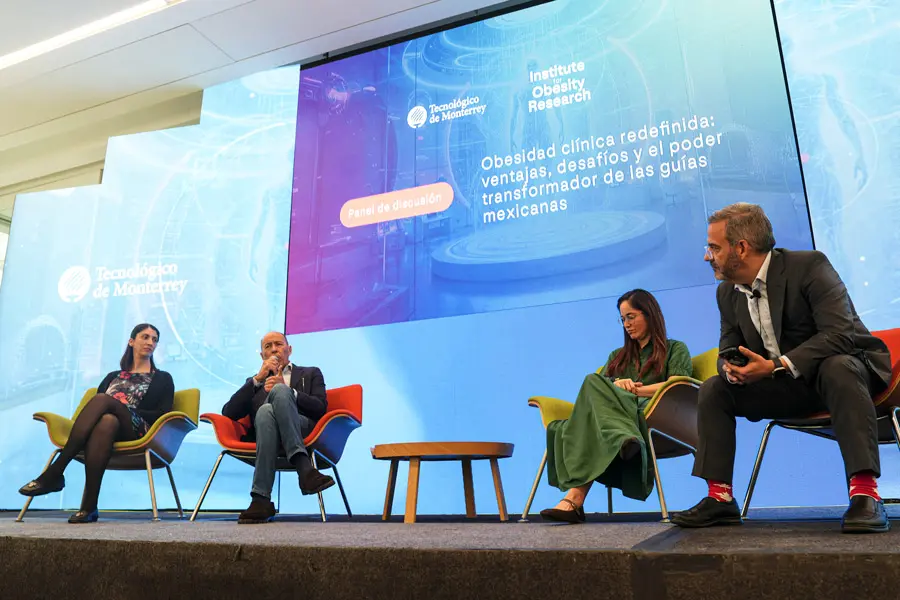
Redefining clinical obesity
The first panel presented at the event was: Redefining Clinical Obesity: Advantages, Challenges, and the Transformative Power of Mexican Guidelines, moderated by Leonardo Mancilla.
This panel featured Juan García, former head of the Mexican Society of Nutrition and Endocrinology; Emma Chávez, Coordinator of the Obesity Clinic of the “Salvador Zubirán” National Institute of Medical Sciences and Nutrition; and Verónica Vázquez, President of OBESIDADES A.C.
They discussed the implications of the new international position on clinical obesity, published in The Lancet, and the need for guidelines adapted to the context of each region, in this case, Mexico.
“How do you persuade someone in a preclinical state? The message we need to craft will need to be different,” said Juan García.
“We need to have a fundamental focus on prevention to promote healthy weights and emphasize the harmful effect that excess weight has on individuals with existing health conditions,” he added.
Emma emphasized that Mexico needs its own clinical obesity guidelines, as social, cultural, and economic differences require adapting scientific knowledge to local practice in order to achieve meaningful impact.
“Having ‘tropicalized’ guidelines means that, despite conducting a systematic review of the literature and having high-level evidence, the recommendations will ultimately depend on your specific clinical and social context.
“You may have a certain level of evidence ‘x,’ but the strength of recommendation might change based on factors such as feasibility, affordability, and whether it applies equally across rural and urban area or different ethnic groups. That’s why adapting, or tropicalizing, the guidelines is important,” she said.
Verónica Vázquez said as that some patients feel abandoned by the healthcare system, telling them they have preclinical obesity may lead them to not caring for their health as they ought to.
“Telling people they have preclinical obesity essentially means telling them that they aren’t eligible for treatment, that ‘it’s not that serious,’ which can be discriminatory,” she said.
Finally, she pointed out that there needs to be a personalized and humanized approach.
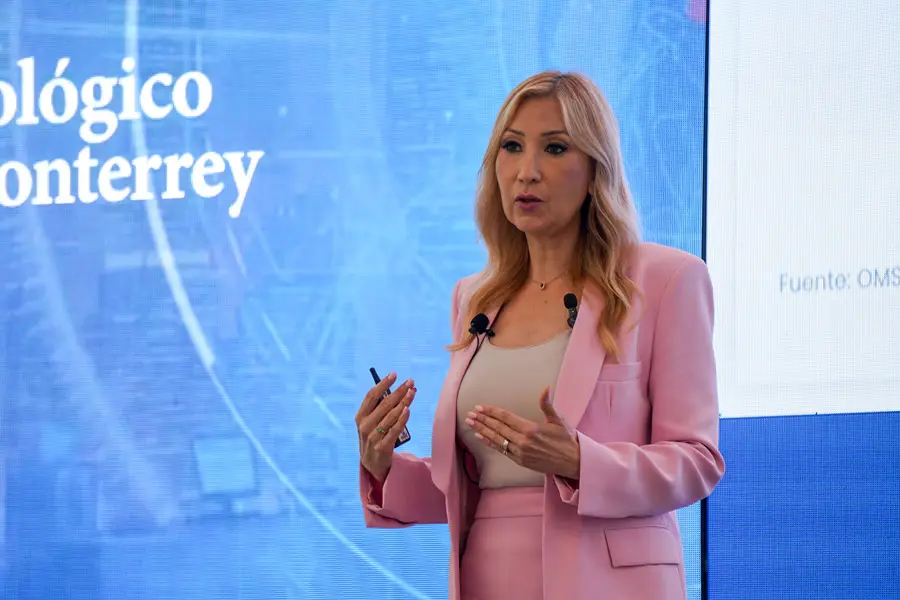
Public policies to tackle obesity
Obesity represents a serious and growing public health problem, which starts from an early age, affects both children and adults, and is associated with life-threatening diseases, said Alma Rosa Marroquín, Secretary of Health for Nuevo León.
For instance, the 2022-2024 Health and Nutrition Survey revealed an increase in the prevalence of this condition in minors in that state, where four out of every ten boys are overweight.
Additionally, abdominal obesity affects 92.8% of adults between 40 and 49 years of age.
“That means it affects nine out of ten young adults, who are in the prime of their lives. This will impact us in many ways, from the individual’s decision-making and quality of life to his or her overall contribution to society,” she said.
Marroquín said that this problem is due to factors such as an obesogenic environment influenced by social, genetic, and environmental factors, along with an unhealthy food culture.
To address this problem, strategies and public policies are needed to combat overweight and obesity through nutritional education and awareness, assessments carried out by healthcare personnel, and regulation of the food environment.
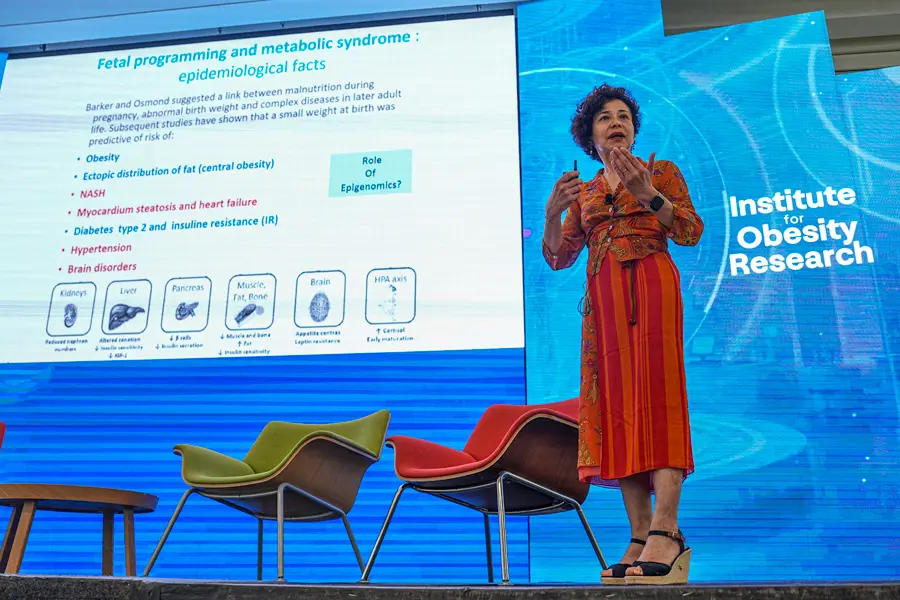
2025 International Conference on Obesity Research
The new definition of clinical obesity and other topics related to this condition are on the agenda for the event, which also presented projects under development at the Institute, said Marco Rito, Director of the IOR.
“The Conference provides us the opportunity to showcase the kind of research we’re doing, not only within the Institute but also in collaboration with colleagues from external institutions beyond the Tec,” Rito said.
In addition to the redefinition of clinical obesity, there are sessions addressing topics such as B vitamins, epigenetics, and fetal programming; chemoinformatics in drug development; and nanophotonic-based biosensors.
The event included keynote addresses, panel discussions, and presentations from institute researchers. It was held at the La Carreta Pavillion on the Tec’s Monterrey campus on April 29 and 30.
Content can be viewed via Live TEC.
With information from Ricardo Treviño, of TecScience.
ALSO READ:





